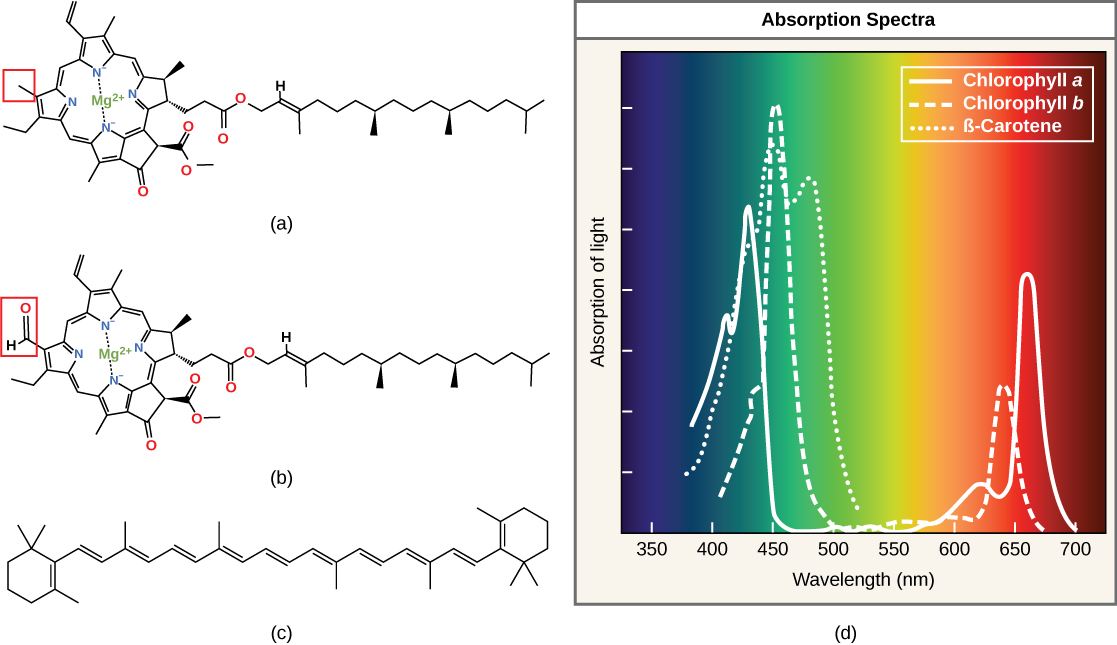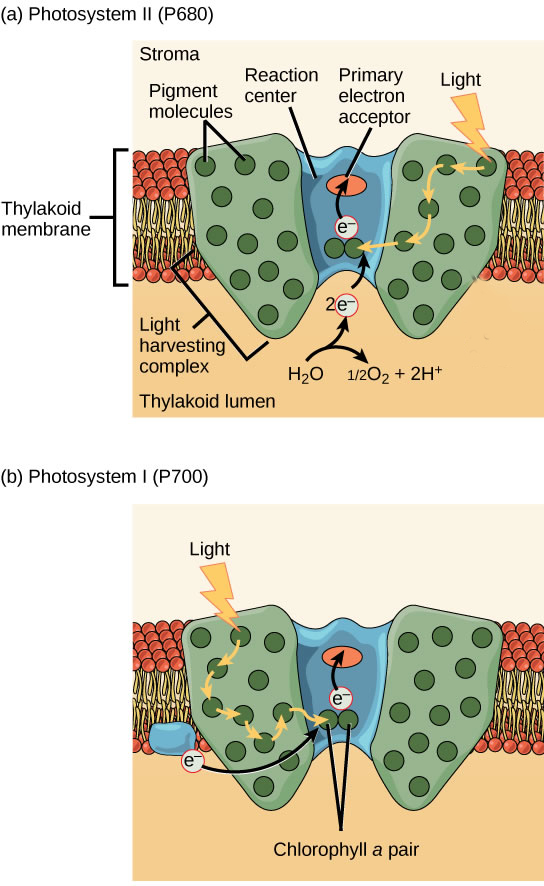| << Chapter < Page | Chapter >> Page > |

Many photosynthetic organisms have a mixture of pigments; using them, the organism can absorb energy from a wider range of wavelengths. Not all photosynthetic organisms have full access to sunlight. Some organisms grow underwater where light intensity and quality decrease and change with depth. Other organisms grow in competition for light. Plants on the rainforest floor must be able to absorb any bit of light that comes through, because the taller trees absorb most of the sunlight and scatter the remaining solar radiation ( [link] ).

When studying a photosynthetic organism, scientists can determine the types of pigments present by generating absorption spectra. An instrument called a spectrophotometer can differentiate which wavelengths of light a substance can absorb. Spectrophotometers measure transmitted light and compute from it the absorption. By extracting pigments from leaves and placing these samples into a spectrophotometer, scientists can identify which wavelengths of light an organism can absorb. Additional methods for the identification of plant pigments include various types of chromatography that separate the pigments by their relative affinities to solid and mobile phases.
The overall function of light-dependent reactions is to convert solar energy into chemical energy in the form of NADPH and ATP. This chemical energy supports the Calvin cycle and fuels the assembly of sugar molecules. The light-dependent reactions are depicted in [link] . Protein complexes and pigment molecules work together to produce NADPH and ATP.

The actual step that converts light energy into chemical energy takes place in a multiprotein complex called a photosystem [link] , two types of which are found embedded in the thylakoid membrane, photosystem II (PSII) and photosystem I (PSI) ( [link] ). The two complexes differ on the basis of what they oxidize (that is, the source of the low-energy electron supply) and what they reduce (the place to which they deliver their energized electrons).

Notification Switch
Would you like to follow the 'Principles of biology' conversation and receive update notifications?